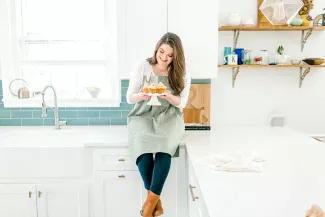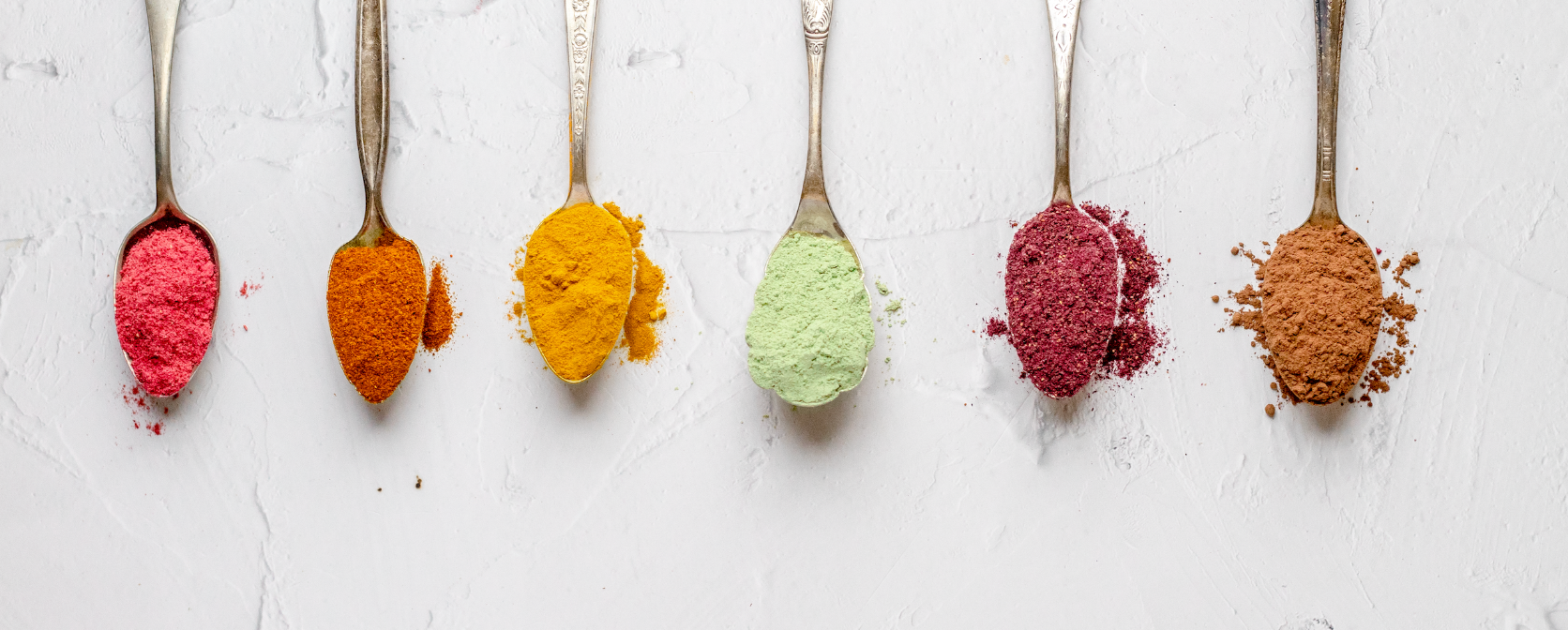DIY Coloring
There are a few main considerations when making your own food coloring:
The source of color
Almost any fruit or vegetable can be the source of natural food coloring! Some recommended ingredients for each color are:
Pink: strawberries, raspberries, pomegranate
Red: tomato, cranberries
Orange: carrots, paprika, sweet potato
Yellow: saffron, turmeric
Green: matcha, spinach, herbs (basil, parsley, etc)
Blue: butterfly pea flower, red cabbage plus baking soda
Purple: blueberries, purple sweet potato
Brown: coffee, tea, cocoa
Black: activated charcoal, squid Ink
Flavor of ingredients
When you make natural food colorings a consequence is that whatever you’re cooking will take on a little bit of the flavor of the food coloring. The more coloring you add, the more your food will take on that flavor. Fruits are always a safe bet when trying to color desserts and vegetables typically work better for savory dishes. I don’t recommend trying to use spinach to dye your buttercream frosting green, however it would be great for coloring homemade pasta dough!
Expect more muted colors
Something to keep in mind is that natural food coloring will always be more muted than artificial colors. It’s very hard to achieve super vibrant colors when using natural colors. However, the more concentrated your food coloring, the more intense the color will be!
Powdered vs liquid food coloring
There are two main types of natural food coloring: powder and liquid. Powders are the preferred method because they’re the easiest to make and don’t add any extra liquid to whatever you’re cooking or baking. You can purchase many fruits and vegetables already in powdered form, or you can buy freeze-dried fruits/veggies and grind them into a fine powder using a food processor or spice grinder. Many ingredients like cocoa, matcha, and turmeric are typically already sold in powdered form so you can add those directly to whatever you’re coloring!
The second option is making a concentrated liquid. The food dye can be pure juice, puree, or a water-based reduction. A vegetable juicer is one of the best ways to get a pure concentrated food coloring (think vibrant carrot juice)! Many berries are great for making into a puree. You can bring berries up to a simmer in a very small amount of liquid, then puree and strain out all the solids. This gives you a slightly thicker concentrate. The water method is the least recommended but is great for certain ingredients! For instance, saffron must be infused in warm water to give off its vibrant yellow color! However, liquid food coloring is perfect for dyeing Easter eggs.
Regardless of which method you use, all liquid food colorings need to be reduced down as much as possible to ensure the most concentrated color. Let the liquid food coloring simmer over low heat until it’s thickened and reduced by at least half.
Heat can affect the color
Natural food coloring is most vibrant when it’s not cooked (for example, coloring frostings). Heat can affect the food coloring by making it become duller or browner when cooked, so you’ll need to add extra if adding it to something like cake batter.
Store Bought Natural Food Coloring
There are also some great commercially available natural food colorings that can be found at your local grocery store or online retailers. Several brands also offer natural liquid food dyes!

Meet the Chef: Kyleigh Sage
Kyleigh is the food photographer and recipe developer behind the blog Barley & Sage, where she shares scratch-made recipes for the home cook and baker. Her pup Barley serves as her assistant and head taste-tester.


